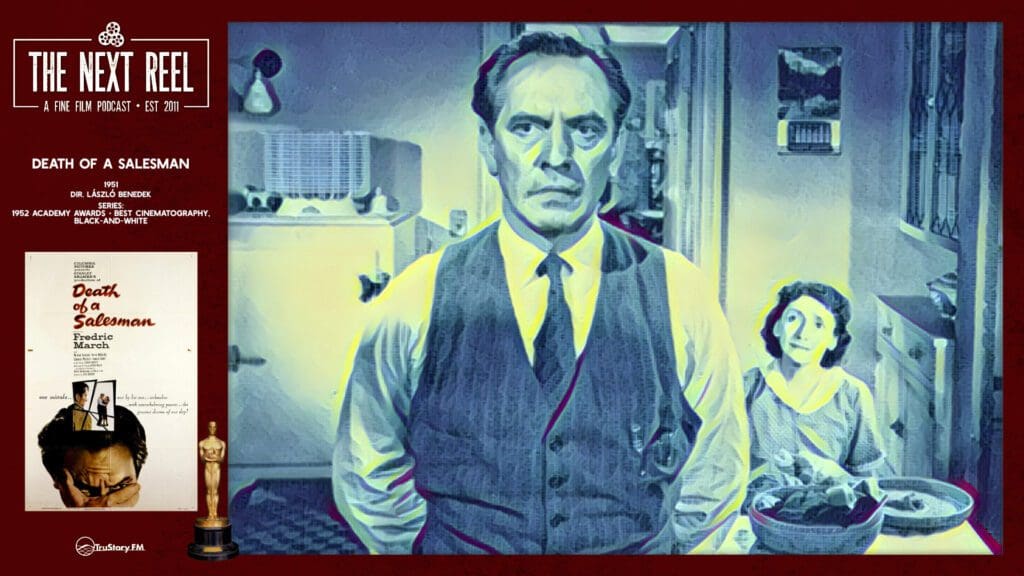Kicking Off Our Next Series With a Conversation About László Benedek’s 1951 Film Death of a Salesman
It had only been a few years since Arthur Miller’s play made its successful debut, and the story was exactly the sort producer Stanley Kramer sought out. He brought László Benedek on to direct and Stanley Roberts on to adapt it for the screen. Unfortunately, the film was a box office flop, whether due to the studio’s concerns about its anti-American themes or audiences seeking lighter entertainment after World War II. Still, Benedek and Kramer assembled a strong adaptation of Miller’s story, even if Miller himself wasn’t a fan. Join us – Pete Wright and Andy Nelson – as we kick off our series looking at the 1952 Academy Award nominees for Best Cinematography • Black-and-White. We’ll be discussing Benedek’s 1951 film Death of a Salesman.
Here’s a hint at what we talk about.
We closely analyze the strained father-son relationships that drive the narrative. Salesman Willy Loman (Frederic March) and his older son Biff (Kevin McCarthy) have a fractured bond ever since Biff discovered Willy’s affair years before. This broken trust continues to shape their tense interactions, as Biff struggles to meet Willy’s high expectations.
We also examine the symbolic role of Willy’s wealthy brother Ben, who appears in visions. Ben represents Willy’s glorified notions of the American Dream and success. While Willy finds inspiration in Ben’s purported business ventures abroad, he never pursues such risks himself. This critique of capitalism’s empty promises factors heavily in the story.
Much of our discussion also focuses on Franz Planer’s evocative cinematography. We analyze Planer’s striking lighting, camerawork and framing as part of our ongoing series on the 1952 Best Cinematography nominees. Despite a poor quality print, we note innovative techniques like scenes reflected in shadows. The transitions between reality and memory are especially inventive, showcasing advantages of adapting the stage play cinematically.
Additional topics include:
- Mildred Dunnock’s strong performance as the supportive yet insightful Linda Loman
- Benedek’s clever transitions between the past and present
- Why the play still resonates through countless reinterpretations
Whether you know Miller’s famous play or are discovering it for the first time, don’t miss our engaging discussion of this impactful American tragedy. We have a great time talking about it, so check it out then tune in. The Next Reel – when the movie ends, our conversation begins!
Join the conversation with movie lovers from around the world on The Next Reel’s Discord channel!
Film Sundries
Learn more about supporting The Next Reel Film Podcast through your own membership.












